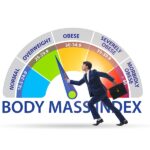December 26, 2011
By David Blyweiss, M.D.
In This Issue:
- Why standing on the scale doesn’t cut it anymore
- Knowing your body’s fat-to-muscle ratio is key
- How to take your BMI/BAI/BIA readings
As our understanding of obesity and its risks have gotten more sophisticated, our ability to assess body fat relative to our body mass has become more important.
With sophistication, however, comes confusion.
Just when you learned how to calculate your BMI (Body Mass Index), word on the street was that your BAI (Body Adiposity Index) was more important.
MD Exposes the Hidden Danger to Your Eyes

When your eyesight starts to fail, it's a real problem. Suddenly you can't go to the grocery store... you can't get to the doctor if you have an emergency... you can't meet your friends for dinner…
Your "regular" doctor doesn't have time to keep up with the latest research. And the same goes for eye doctors. They go to school to learn how to fit you for glasses and contacts, but have no way of preventing the damage and loss of eyesight that threatens your freedom and independence.
Let me show you something that explains a LOT about how your eyes work.
In my FREE Special Report, I'll show you a HUGE, untapped resource for your eyes that safely and naturally restores clear, effortless eyesight.
Click here to get started...
And if you haven’t heard of a BIA (Bioelectrical Impedence Analysis), I’m going to complicate things even further, and tell you why I think that is the most important number of the three.
But don’t worry. I’ll clear it all up for you, and even provide you with helpful links so you can calculate these figures on your own, and find out if your own figure is in shape…
In the battle against the bulge, we forget that fat has a function. It helps regulate body temperature, provides a protective cushion for your organs and joints, and stores vitamins and nutrients when food is scarce. It also stores fat soluble organic pollutants and inflammatory cytokines, and is a repository of excess estrogen.
But in an age when severely underweight models have become the standard of beauty, and average Americans are growing in the opposite direction, knowing whether you have enough, too much, or just the right amount of fat can be a challenge.
The BMI (Body Mass Index) is the most popular indicator of whether your ratio of weight to height is in proportion. But it doesn’t tell us much about your fat-to-muscle ratio.
The World's Quickest Solution for Ending Prostate and Urinary Misery
This has recently been revealed to be one of the only real breakthroughs in prostate health.
The seeds of a strange fruit (sometimes called "Chinese Apples") hold powerful phytonutrients that are a revolution in prostate health.
In fact, UCLA and Veterans Administration research have now proved this to be true.
Not only that, but it may be the worlds quickest solution for ending prostate misery.
Simply stated, these phytonutrients represent a huge step beyond beta sitosterol, saw palmetto, and other phytosterols alone.
Simply click HERE if you want to have fast prostate relief...restful, uninterrupted sleep...no more constant "urges to go"...enhanced virility...and optimal prostate support for life.
Since muscle weighs more than fat, athletes rejected the BMI as an indication of overweight a long time ago. And surely, many who tackled their diet, increased their exercise, and started converting their fat to muscle were not rewarded with a better BMI – or lower number on the scale – and gave up.
Assessing your BAI (Body Adiposity Index) is a step in the right direction. It can help you to get a better idea of the percentage of fat you’re carrying around. This number measures your hips and height…and never requires you to get on a scale.
For those who have spent years torturing themselves with daily weight watching, this alone could make you want to switch.
While the BAI is moving in the right direction – in taking the difference between muscle and fat into account – the assessment that I find the most accurate is the BIA (Bioelectrical Impedance Analysis). This technique measures body composition by sending a low – very safe – level of electrical currency through the body. When the current passes through muscle tissue, it doesn’t encounter resistance. When it passes through fat tissue, it does. This resistance is called “bioelectrical impedance” – and it enables us to make a much more accurate assessment of how much body fat you have.
I also like that the final number takes height, weight and gender into account – all of which deserve a place in the final assessment of a person’s true fitness level.
You do need an instrument to take your BIA, which is readily available online and in some gyms, fitness centers and doctor’s offices. But it’s worth the extra effort to get a more accurate reading of your body’s fat-to-muscle composition.
Keep reading to learn how to calculate all three of these numbers…
If you get on the scale every day…or simply test the waistband of your clothing to see if it’s getting more snug or more loose, you’re not getting enough useful information about your health.
Here’s how you can assess yourself in the three important ways I’ve described above:
- Your body’s height and weight proportion (BMI)
There are BMI calculators all over the internet. I like this one from the National Heart Lung and Blood Institute because it also gives you the scale to the right and is very straightforward. All you need to measure on your own is your height and weight, plug in the numbers, and hit enter. - Where you carry fat on your body (BAI)
There are fewer BAI calculators available online, but they do exist. Many of them also offer a helpful side-by-side comparison with your BMI, so you can get both at once. For the BAI all you need to know is your height and hip circumference. This is the online tool I like the best because you don’t have to make a metric conversion to use it. - Your body’s ratio of fat-to-muscle (BIA)
There are two popular makers of at-home BIA devices, Omron and Tanita. If you feel you will use it regularly, by all means have one on hand. But if not, you may be able to find a fitness center or a physician who can do this for you. It is not something you need to monitor daily, but if you are on a specific diet and exercise program aimed at converting fat to muscle and improving your body composition, you might want to check your progress monthly.
Also, one of the most important aspects of this test is your hydration level. So be sure you are well-hydrated before you take the test, or you won’t get the most accurate reading.
Resources:
Amani R. Comparison between bioelectrical impedance analysis and body mass index methods in determination of obesity prevalence in Ahvazi women. Eur J Clin Nutr. 2007 Apr;61(4):478-82. Epub 2006 Oct 25.
Johnson W, et. al. Concordance of the Recently Published Body Adiposity Index With Measured Body Fat Percent in European-American Adults. Obesity (Silver Spring). 2011 Nov 17. doi: 10.1038/oby.2011.346. [Epub ahead of print]





